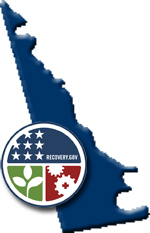Broadband’s ability to expand educational and employment opportunities is especially meaningful for Americans who are deaf or hard of hearing, a community that faces unique challenges in education and that suffers from a rate of unemployment much higher than the national average. Communication Service for the Deaf, Inc. (CSD) intends to expand broadband adoption among people who are deaf and hard of hearing and provide them with online tools to more fully participate in the digital economy. The project proposes to employ a combination of discounted broadband service and specialized computers, technology training from an online state-of-the art support center customized to the community’s needs, public access to videophones at anchor institutions from coast to coast, and a nationwide outreach initiative. Thousands will gain online access to all the Internet has to offer, including sign language interpreters, captioned video services, and other content and functionalities designed especially to advance their educational, employment, and healthcare interests.
Delaware

| Grantee | Total Award | Type |
|---|---|---|
| Communication Service for the Deaf, Inc. | $14,988,657 | Sustainable Adoption |
| Delaware Department of State | $1,899,929 | Public Computer Centers |
| Delaware Department of Technology and Information | $3,080,450 | Broadband Data & Development |
| University Corporation for Advanced Internet Development | $62,540,162 | Infrastructure |
To address the online access needs of economically vulnerable communities in Delaware, its Department of State’s Division of Libraries is proposing an equipment upgrade and the expansion of a training program at public computer centers throughout the state. The project plans to serve residents by providing public access computers, assistive technology, videoconferencing capabilities, and wireless networking. The computer centers at the Dover, Georgetown, Seaford, and Wilmington libraries will become Job/Learning Labs focusing specifically on the needs of the unemployed, with specialized training for resume building, job search, and interview skills. The project also proposes to expand Spanish-language computer training programs in Wilmington, the area with the largest Hispanic population in Delaware.
Project Components
Technical Assistance:
In partnership with the University of Delaware’s Institute for Public Administration (IPA), the Delaware Department of Technology and Information will identify, catalogue and analyze all digital literacy initiatives currently underway in Delaware. IPA will incorporate broadband literacy into existing curriculum that it uses for certificate programs aimed at local appointed and elected officials. It will also support “train-the-trainer” activities that provide institutional training to municipalities, small businesses and non-profit organizations through existing entities such as the Delaware Municipal Web Developers Group.
Data Collection, Integration, and Validation:
This project was originally funded for broadband planning activities and two years of data collection. In September of 2010, this project was amended to extend data collection activities for an additional three years and to identify and implement best practices.
As part of a longstanding project to connect essential community anchor institutions across the country, and facilitate closer collaboration and long-term benefits for education, research, healthcare, public safety, and government services, the University Corporation for Advanced Internet Development (UCAID) proposes a comprehensive 50-state network benefitting approximately 121,000 community anchors. The project proposes a large-scale, public-private partnership to interconnect more than 30 existing research and education networks, creating a dedicated 100-200 Gbps nationwide fiber backbone with 3.2 terabits per second (TBps) total capacity that would enable advanced networking features such as IPv6 and video multicasting. The project plans to connect community anchors across all disciplines into virtual communities with shared goals and objectives, including colleges, universities, libraries, major veterans and other health care facilities, and public safety entities, with additional benefits to tribes, vulnerable populations, and government entities.
